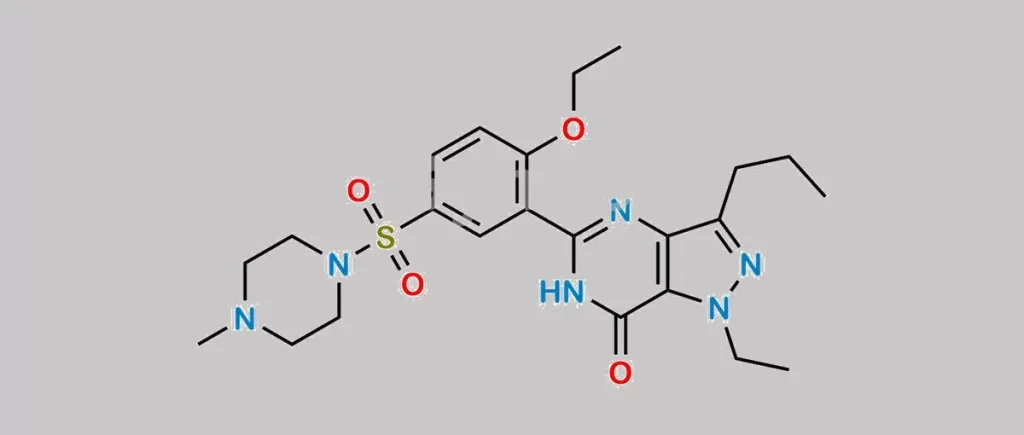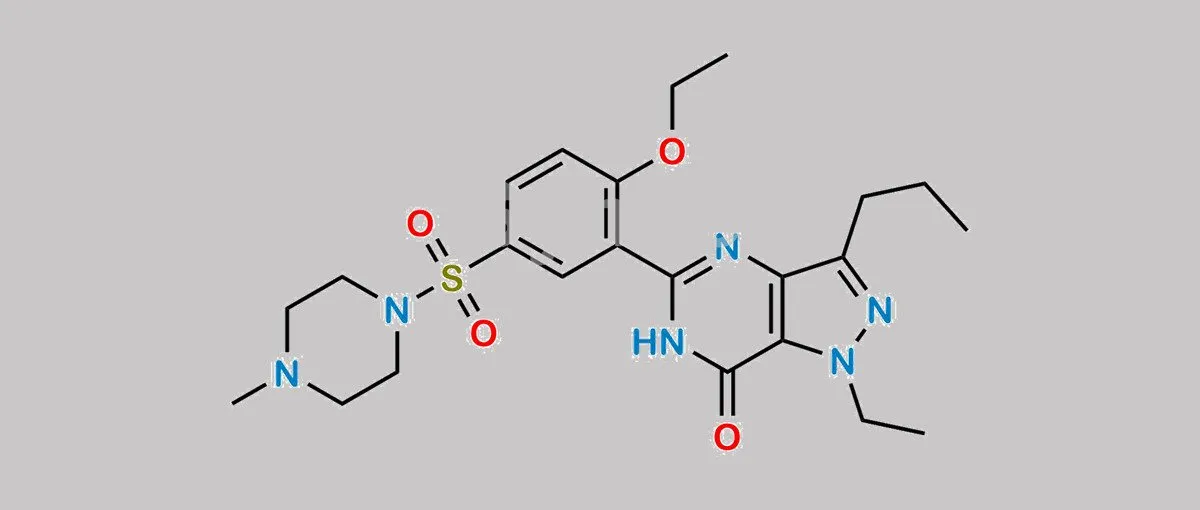この記事の概要
Sildenafil (Sildenafil), also known as a phosphodiesterase type 5 (PDE5) inhibitor, is used primarily for the treatment of erectile dysfunction (ED), but also for pulmonary hypertension. This drug is particularly well known under its brand name Viagra.
Sildenafil (Sildenafil), also known as a phosphodiesterase type 5 (PDE5) inhibitor, is used primarily for the treatment of erectile dysfunction (ED), but also for pulmonary hypertension. This drug is particularly well known under its brand name Viagra.

Molecular structure of sildenafil
The chemical formula of sildenafil is C₂₂₂H₃₀N₆O₄S and has the following characteristic chemical structure
- Pyrazolopyrimidine nucleus
- The active portion of sildenafil, this heterocyclic compound plays an important role in the molecule’s binding to PDE5.
- Phenyl group: Phenyl group
- Several phenyl groups are incorporated into parts of the molecule, which increase the liposolubility of the molecule and affect the behavior of the drug in the body.
- Methoxyphenyl group
- The molecule is bonded to phenyl groups, including methoxy groups, which contribute to the hydrophilic and interaction properties of the molecule.
- Sulfonamide group
- Sulfonamide groups located at the molecular ends provide water solubility and improve the in vivo solubility and stability of the drug.
Sequence of actions
Sildenafil is known to inhibit the activity of the PDE5 enzyme, which is abundant in penile tissue and is responsible for degrading cGMP (cyclic guanosine monophosphate). cGMP promotes blood flow by relaxing smooth muscle and dilating blood vessels. Inhibition of PDE5 by sildenafil increases the concentration of cGMP in response to sexual stimulation, which promotes and sustains erections.
Due to this molecular structure, sildenafil efficiently binds to PDE5 and is particularly effective in the treatment of ED by supporting sexual activity. It also has a similar effect on the smooth muscle of pulmonary blood vessels and is therefore used to treat pulmonary hypertension.










